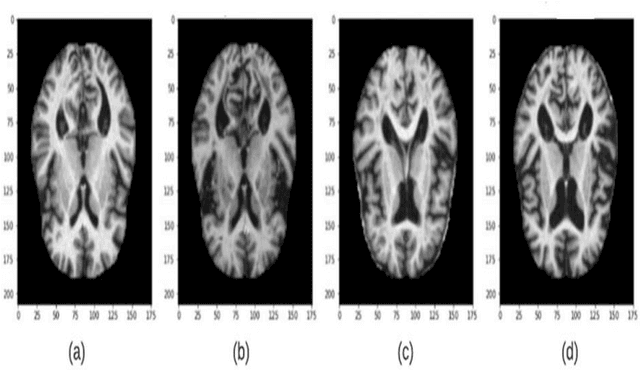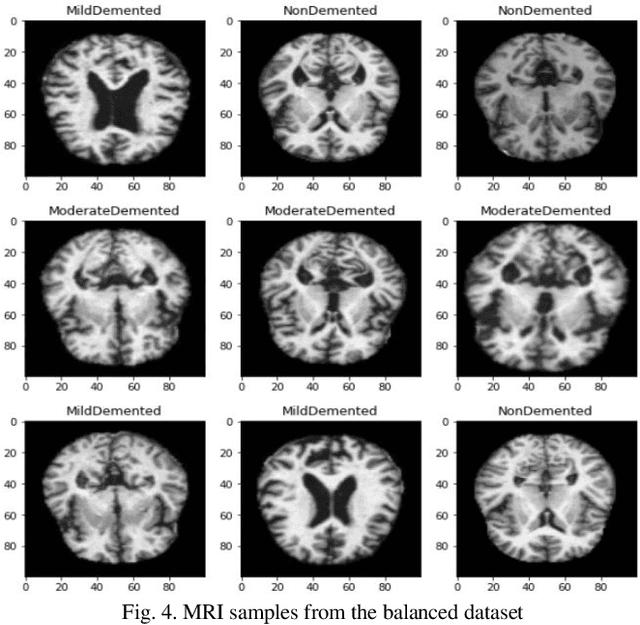Detection of Alzheimer's Disease Using Graph-Regularized Convolutional Neural Network Based on Structural Similarity Learning of Brain Magnetic Resonance Images
Paper and Code
Feb 25, 2021



Objective: This paper presents an Alzheimer's disease (AD) detection method based on learning structural similarity between Magnetic Resonance Images (MRIs) and representing this similarity as a graph. Methods: We construct the similarity graph using embedded features of the input image (i.e., Non-Demented (ND), Very Mild Demented (VMD), Mild Demented (MD), and Moderated Demented (MDTD)). We experiment and compare different dimension-reduction and clustering algorithms to construct the best similarity graph to capture the similarity between the same class images using the cosine distance as a similarity measure. We utilize the similarity graph to present (sample) the training data to a convolutional neural network (CNN). We use the similarity graph as a regularizer in the loss function of a CNN model to minimize the distance between the input images and their k-nearest neighbours in the similarity graph while minimizing the categorical cross-entropy loss between the training image predictions and the actual image class labels. Results: We conduct extensive experiments with several pre-trained CNN models and compare the results to other recent methods. Conclusion: Our method achieves superior performance on the testing dataset (accuracy = 0.986, area under receiver operating characteristics curve = 0.998, F1 measure = 0.987). Significance: The classification results show an improvement in the prediction accuracy compared to the other methods. We release all the code used in our experiments to encourage reproducible research in this area
 Add to Chrome
Add to Chrome Add to Firefox
Add to Firefox Add to Edge
Add to Edge